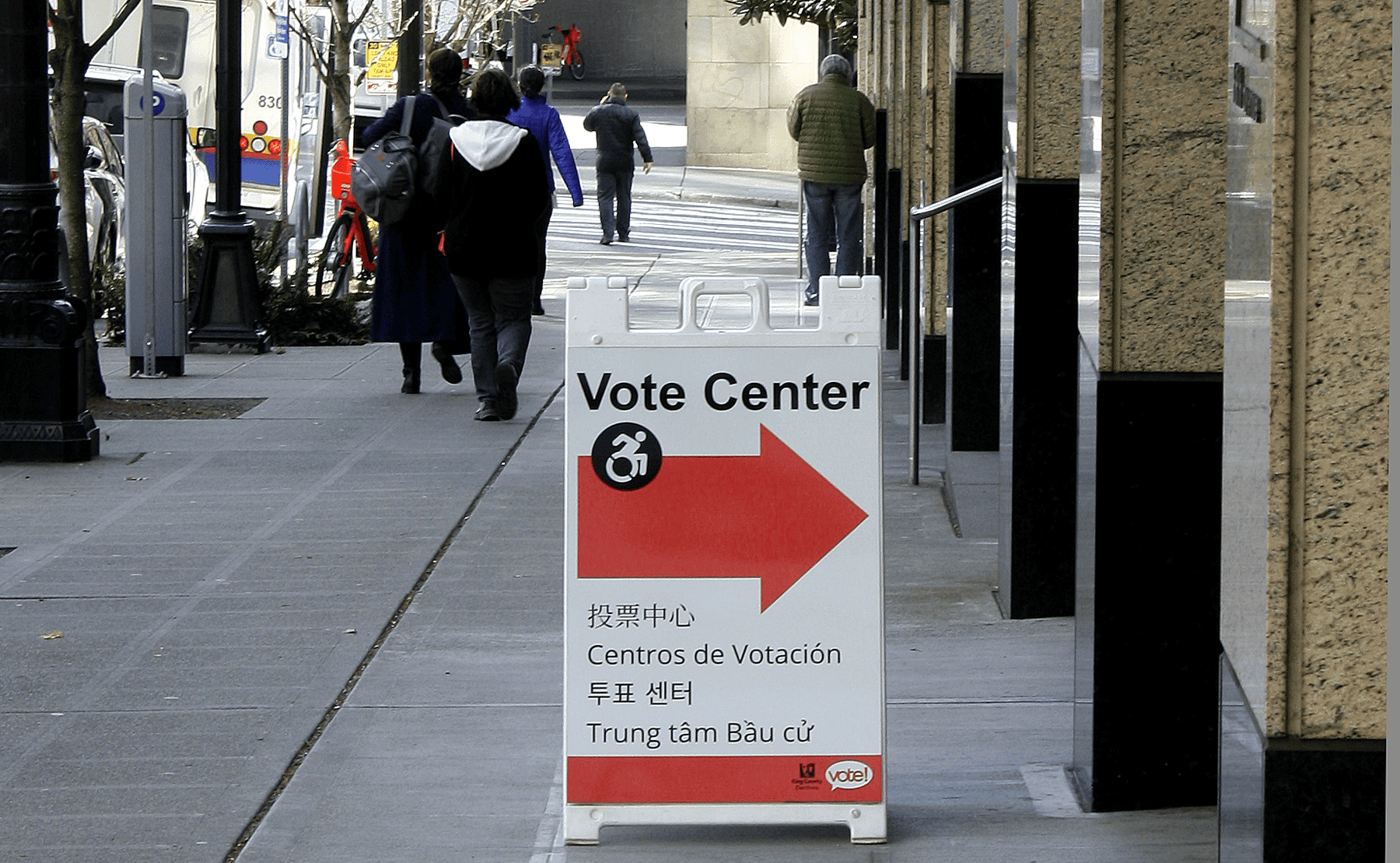Takeaways
- Seattle’s rare even-year special election exemplified how local offices can garner considerably higher voter participation in even-numbered years than odd ones.
- Over 100,000 more people cast a vote in the city’s at-large council election in 2024 than in the most recent mayoral race simply because of the election’s timing.
- Even defeated city council candidate Tanya Woo earned more votes than any sitting councilmember because she was running in 2024 rather than in an odd-numbered year.
Find audio versions of Sightline articles on any of your favorite podcast platforms, including Spotify, YouTube, and Apple.
First-time candidate for Seattle City Council Alexis Mercedes Rinck just got more votes in her 2024 race than the city’s mayor, Bruce Harrell, when he won in 2021. In fact, she got more votes than any elected official in all elections that Seattle city government has ever recorded.
But it’s not because she’s particularly popular. (Plenty of other candidates have achieved a similar margin of victory.) It’s just that she ran for office in an even-numbered year. Even the candidate Rinck defeated, Tanya Woo, got more votes than almost all other city leaders when they won their respective elections.
Rinck and Woo had the good fortune to run for office in a rare special election, which happened to appear on the same ballot as the major league offices of US president and Washington governor. Other city politicians in Seattle, as across Washington, normally run in odd-numbered years, when a fraction of as many voters bother to show up.
The result: King County voter turnout in the 2024 November election is on track to more than double the turnout in the 2023 November election (79.9 percent to 37.3 percent). And that’s how Rinck can claim support from many more voters than anyone else in city hall.
Rinck earned around one-and-a-half times more votes than other recent at-large city candidates. She received 65,000 more votes than Teresa Mosqueda, who won the same at-large Position 8 seat in 2021.
Mayoral elections typically net the highest voter participation of any city election. But over 100,000 more people voted in Rinck’s election than in the previous odd-numbered-year mayoral race. Far more voters voted in the 2024 city council race than in any recent previous city office election, as depicted in the chart below.

Rinck handily beat her opponent, Tanya Woo (58 percent to 41 percent), but even the defeated Woo received more votes than the winning at-large council candidates did in 2021. In fact, though Woo lost in 2024, she earned more votes than any winning city officeholder in recent elections, except current mayor Bruce Harrell.

Was this election, then, asphyxiated by the toxic presidential race that sucked up an outsized share of media attention? No. Were the ballots too long for voters to understand, as the Seattle Times suggested, forcing people to drop their pens and stop voting? Certainly not.
Instead, the takeaway from this special election is that more voters participate when voting is easy: when they’re doing it anyway. It’s much easier to look up one more position and fill in one more bubble when you’re already completing a ballot than it is to open, research, and fill out an entirely new one at another time. And that lessened effort shows in this year’s participation numbers.
State legislators could allow localities to more consistently take advantage of this simple participation boost by allowing them to move their elections to even-numbered years. Then cities could be freed to access a more engaged electorate during every election, rather than just a one-off special circumstance.


